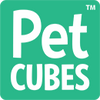Shopping Cart ( )
Your cart is currently empty.
If you are a pet owner, chances are you have come across pet food touting the label ‘grain-free’. However, what does grain free pet food really mean and entail? In this article, we explore what it takes for pet food to be deemed ‘grain free’ and whether this actually means it is a healthier option for your pet.
To start off, in order to understand what grain free means, we have to first understand what grains are to begin with. Grains include wheat, corn, rice, oats, barley, rye and soy (not technically a grain but often included in the ‘grain free’ cluster).
As the term ‘grain free’ pet food suggests, such pet food does not include any of the ingredients mentioned above, however this does not mean that the pet food lacks carbohydrates. In fact, such grains are substituted with other carbohydrate sources such as potatoes, peas, lentils or quinoa. It is important to understand that a grain-free diet may have just as much, or higher amount of carbohydrates than pet food with grains.
Contrary to popular belief that grains may trigger allergic reactions in your pet, many allergies actually stem from reactions to meat and daily protein intakes as opposed to grain-based sources but could technically be caused by any ingredient on the label. In fact, grain allergies in dogs are less than 1% among dogs and those that do have allergies are more likely to develop allergies towards proteins like beef and chicken. This means that eliminating grains from your pet food in hopes to reduce an allergic reaction in your pet may do little to help if it is a true allergy. It is always important to ensure that you identify the right trigger food before removing it from your pet’s diet altogether.
Whole grains could hold intrinsic value as being part of your pet’s food. For starters, whole grains could help to promote healthy bowel movements as they help to provide fibre that promotes healthy digestion. Whole grains also serve as a source of certain vitamins and minerals. However, many commercial dog food brands use processed, by-product cheaper grain sources that tend to be higher on the Glycaemic Index (GI) and lower in nutritional value than whole grains. GI is an index that rates ingredients by how quickly and how high they can cause blood sugars to rise, the higher the GI of a carbohydrate, the higher the chances of it leading to chronic inflammatory responses in your pet such as obesity, diabetes, heart disease, arthritis and even cancer. High carbohydrate intake of dogs and cats are also not recommended and linked to numerous metabolic syndromes, diabetes, obesity, pancreatitis and gut dysbiosis. This holds true whether the simple carbohydrates are from grains or other sources.
Grain-free diets are typically on the pricier end of the pet-food spectrum and such pet food need to be kept in an air-tight container in order to maintain their freshness. The reason for their higher price tags may also be tied to how the carbohydrate substitutes used are more expensive, such as sweet potatoes.
While grain-free pet food is an option, the focus should be on the carbohydrate content of the diet, regardless if they come from grains or not. Whether you own a cat or dog, both animals have the ability to digest and utilise carbohydrates (including grains) but it would not be categorised as biologically appropriate.
It is also important for pet owners to be aware of recent research by the FDA indicating a link between grain-free diets and a diagnosis of dilated-cardiomyopathy (DCM) in dogs which affects the heart muscles and prevents it from pumping blood properly. The belief is that the high amount of legumes in grain-free diets may be the cause to blame for this issue but no causation has been identified. There are other hypotheses in discussion such as the diets that caused DCM being low in Taurine (supported by the DCM happening majorly in a small number of breeds) or not properly processing the grain replacers (peas or lentils) which led them to contain high amounts of lectin (supported by the different grain free foods being linked to DCM cases).
Ultimately, it is about what food is best-fit for your pet and their nutritional needs. When in doubt, always check with your veterinarian nutritionist or PhD animal nutritionist before making any drastic changes to your pet’s diet. Grain-free or grain filled, ultra-processed kibbles will rarely be the sole best option for your pet. Consider some fresh food such as PetCubes to enhance the nutritional quality of the diet.
You have no items in wishlist.
| Title |
|---|
| Price |
| Add to cart |
| Type |
| Vendor |
| Title |
|---|
| Price |
| Add to cart |
| Type |
| Vendor |


